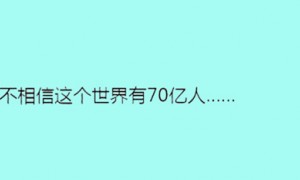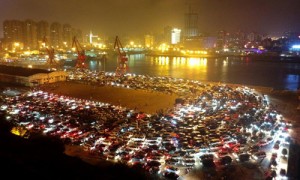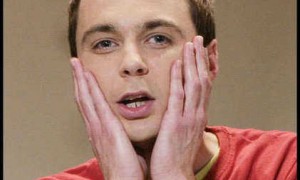The man responsible for stock circuit breakers said Chinese officials must revise their safety net to avoid creating panic, joining critics who argue the trading halts are triggered too easily for such a volatile market.
"They're just on the wrong track," said Nicholas Brady, 85, the former United States Treasury secretary who ran a committee that recommended the curbs on equity trading after the 1987 crash. "They need a set of circuit breakers that appropriately reflects their market."
Brady spoke after Chinese regulators suspended their newly introduced program that ends stock trading for the entire day after a 7 percent plunge. The halt was set off twice in its first week of operation, bolstering speculation China set its threshold too low.
"The right thing to do is to widen their band," Brady said.
The US confronted a similar problem in the 1990s. The curb that the Brady commission helped implement shut the market for the first time on Oct 27, 1997, when the Dow Jones Industrial Average lost 554 points. That was only a 7.2 percent decline, almost identical to the Thursday plunge in China's CSI 300 Index.
The trouble was that a decade-long surge in US stock prices had diminished the value of each point in the Dow. The 1987 508-point slump had amounted to a 23 percent tumble, three times greater than the decline that froze trading 10 years later.
Regulators and exchanges pushed through a revision: If the Dow fell 10 percent, there would be an hour pause. At 20 percent, trading would halt for two hours, and at 30 percent, the day would end early.
In recent years, the benchmark that triggers the halts switched to the Standard & Poor's 500 Index and the levels changed.
Now it takes 7 percent and 13 percent drops to prompt a brief pause, and a 20 percent decline to close markets early for the day.
Whereas 7 percent losses are rare in the US-they were only common during the 2008 financial crisis, October 1987 and the great Depression-Chinese shares have dropped about that much seven times in the past year.
"I don't think this is an exact science," said Sang Lee, an analyst at financial markets researcher Aite Group. with circuit breakers, "if you set these too low, instead of easing volatility, they may increase volatility".
That echoes the view of Brady, who was chairman of Wall Street powerhouse Dillon Read & Co when President Ronald Reagan asked him to figure out what happened during the 1987 crash and propose solutions.
Brady deserves credit for introducing circuit breakers, according to Robert Glauber, a Harvard University lecturer who advised the Brady commission and once ran the National Association of Securities Dealers.
"It was Nick's idea," Glauber said. "Brady was worried then and worried now that the pace of markets was going faster than people could calculate. What you really needed was a timeout. That's what we proposed."
The idea was to give humans time to reflect on what just happened following a plunge, to decide whether losses had gone too far and whether it was time to buy.
"If anything, it's more necessary now because computers are faster and people's brains are about the same speed," Glauber said.
Freezing the market after a decline also deprives traders of the opportunity to drive prices back up. During the May 2010 plunge known as the flash crash, the S&P 500 took just minutes to fall as much as 8.6 percent, then recovered much of the decline almost as rapidly.
"What would have happened if we had just halted at the bottom?" said James Angel, a professor at Georgetown University. "We never, never would have had the quick snap back up. Closing prices for mutual funds would have been at those lows. Think of the panic that would have created."
The China Securities Regulatory Commission said late Thursday that it was suspending the circuit breakers program, adding to concern policymakers are struggling with how to contain turmoil in the nation's financial markets.
"The circuit breaker that I invented restores calm," Brady said.







